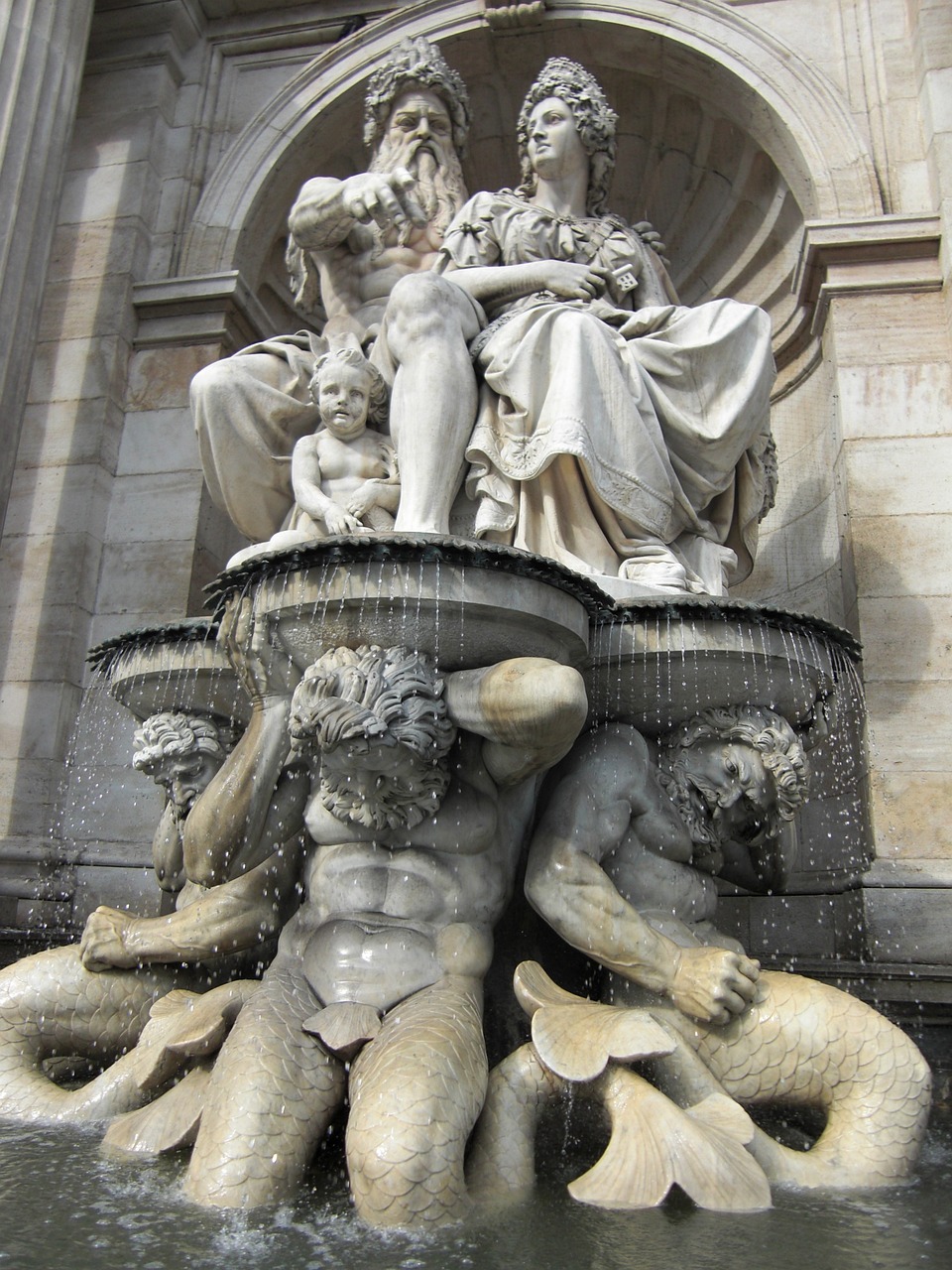The Ceremonial Reverence for Neptune and Celtic Deities
On December 1st, typically coinciding with the new moon, the ancient Romans paid homage to Neptune. This is noteworthy considering Neptune’s limited popularity among Romans, yet he commanded two significant festivals throughout the year. Interestingly, sailors often favored Poseidon, his Greek counterpart, over Neptune when it came to seafaring deities.
The name Neptune is intertwined with several linguistic forms such as Gaelic Nechtan, Brythonic Nodens, and Nuada, all of which trace their origins back to the proto-Indo-European deity Xákwōm Népōt, also recognized as Neptonos. Xákwōm Népōt is associated with guarding a mystical well of fiery waters, which resonates with themes of magic, wisdom, poetry, and prophecy in Irish folklore. His name translates to “Uncle in Water,” possibly hinting at his role as a deity residing in water, symbolizing the source of fiery waters that could emerge from wells and springs. He is linked to the drink of immortality known as *Nekter, signifying an overcoming of death, a theme prevalent across Indo-European traditions.
In Ireland, drinks associated with immortality and wisdom are often represented by the Ale of Goibniu, the smith god, and by the meat of Manannan Mac Lir. Inauguration rituals for Irish kings typically featured mead or honeyed ale, embodying this aspirational separation from mortality.
To assist in organizing worship for those Celtic deities lacking recorded festivals, the Roman Imperial calendar can serve as a useful framework, especially since the Romans had a vast reach across the Celtic regions. Although this led to the pairing of local Celtic gods with popular Roman deities, Celtic individuals often opted for the deities they resonated with most, leading to varied associations, such as connecting a single deity like Mars in one area and Mercury in another. The Celtic perception of divinity often deviated from the Roman framework, suggesting a complex merging of these two pantheons over generations, paving the way for new cults and perspectives.
The Featured Deities
Nechtan (NEK-tan)
Nechtan, known in Gaelic as the guardian of the Well of Wisdom, is accompanied by nine hazel trees that bear fruit throughout the year. Those who consume the water or the nuts, or eat salmon that has fed on the nuts, gain comprehensive knowledge. Residing in the Otherworldly Síd Nechtain, access to the well is limited to Nechtan and his three female attendants, who ensure the safety of the precious liquid. Nechtan is often referred to as the husband of Boann.
The well is recognized by various names, including Connla’s Well, and its description has been immortalized by famous poets like William Butler Yeats, describing its waters as “emotion and passion” entwined with the souls of the purified.
Invocation to Nechtan
The invocation by Heather Awen stresses the significance of Nechtan in Celtic spirituality, emphasizing his role in providing wisdom, knowledge, and an understanding of the natural and mystical connections that permeate existence.
Boann (BO-an)
Boann, the “white cow,” is a prominent member of the Tuatha De Danann, daughter of Delbaeth, and symbolizes wealth and abundance. Cow goddesses are often associated with fertility and the sustenance of tribes. The myth surrounding Boann reflects her sacrificial relationship with the Dagda, highlighting the transformative experiences as she loses parts of herself—ultimately shaping the River Boyne, which is intertwined with significant agricultural and spiritual lore.
Her disobedience in ritual approach ultimately resulted in her transformation into a life-giving river that nourishes the land, illustrating the depths of her connection to both fertility and the spiritual realm.
Nodens (NO-dense)
Nodens, an ancient Brythonic god, embodies themes of hunting, healing, and the sea. The temple complex dedicated to him in Lydney Park, England, signifies his role as a healer. The healing practices associated with Nodens represent a merger of natural water resources with divine intervention, inviting pilgrims into a sacred space to receive guidance and recovery through dreams and visions.
Interconnectedness of the Deities
Nudd and Llud represent evolutionary paths stemming from Nodens, with connections to leadership and romance within their narratives. Nuada, an essential figure in the Tuatha De Danann lore, exemplifies the qualities of a warrior king while also embodying healing attributes associated with the divine. His storied journey, marked by loss and restoration, reflects a central theme in Celtic mythology: the cyclical nature of life and identity.
Ritual Practices for Reverence
For devoted practitioners aiming to honor these deities, particular rituals can enrich the experience. Considering that the fiery waters of their essence demand purity, participants may choose to engage in cleansing practices while making offerings related to each deity’s attributes. A ritual space involving elements from nature, wise approaches to offerings, and thoughtful preparations aligns individuals with the vibrancy of these ancient traditions.
Fasting and purification protocols pave the way for a deeper connection, inviting participants to approach their rituals with respect, readiness, and a focused heart.
Conclusion
The multifaceted identities of Neptune and Celtic deities such as Nechtan, Boann, Nodens, and Nuada unveil rich narratives steeped in spirituality, natural elements, and cultural customs. The blend of Roman and Celtic traditions provides an intriguing lens through which the past can illuminate modern practices and reverence for the divine.



